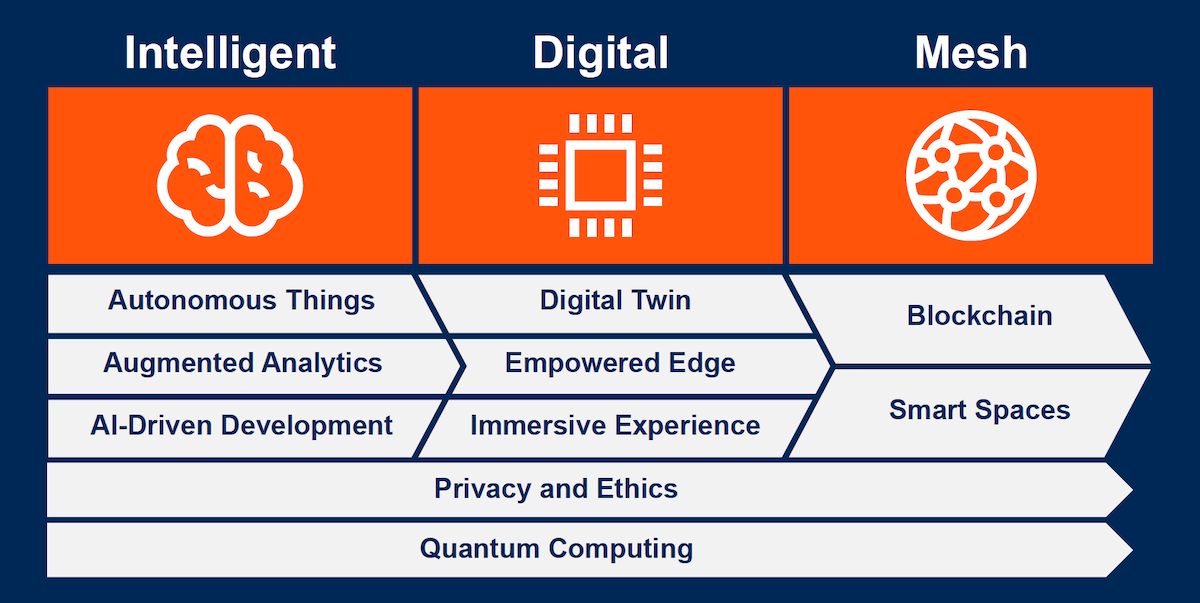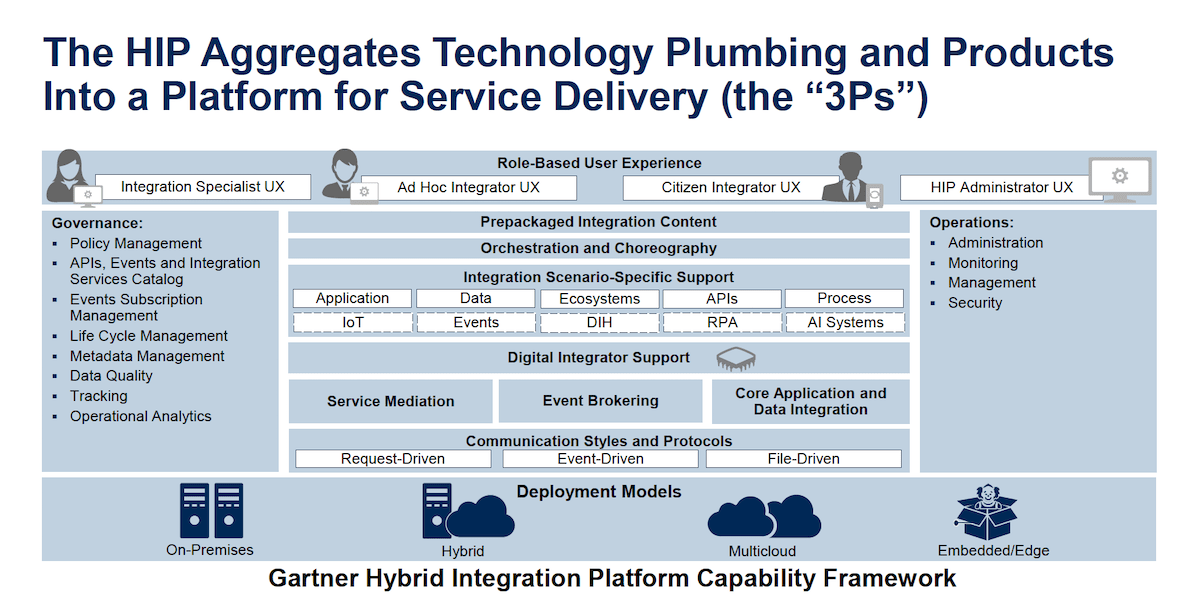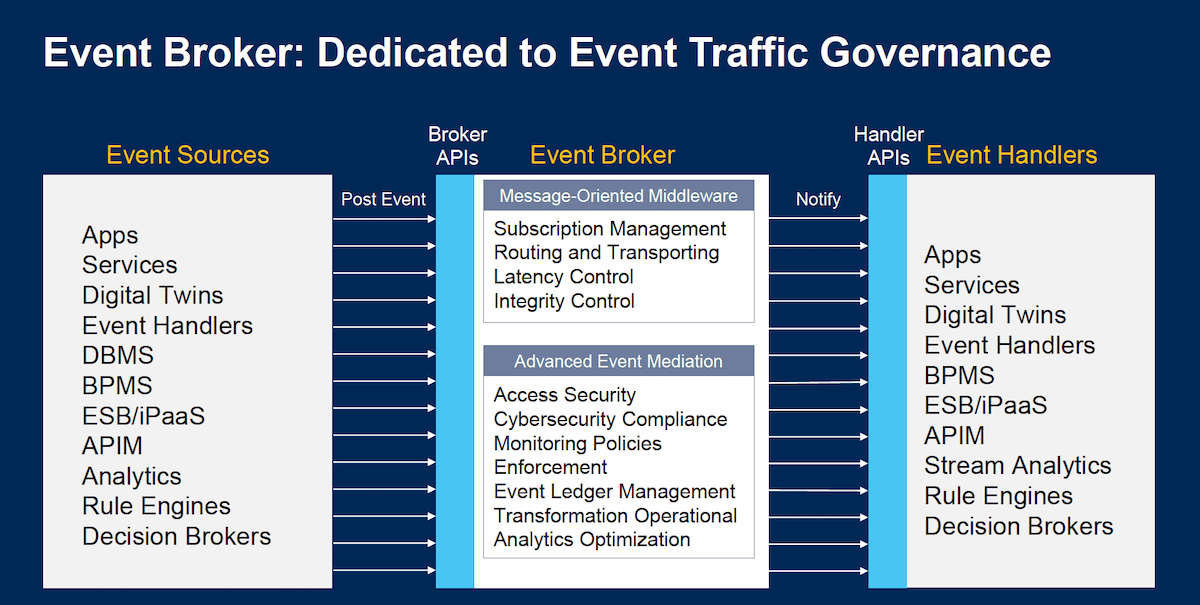Gartner held their annual Symposium/ITxpo in Orlando the week of Oct 15th. The Symposium is often billed as the largest gathering of CIOs and Senior IT Directors in the world, with 8,000+ senior IT folks gathering for a plethora of learning and networking opportunities.
As a representative from Solace, my interest mostly focused on the trending topic of event-driven, which was identified as a top 10 strategic technology at this same event in 2017. After all, excelling in event-driving computing is what Solace is best positioned to help organizations do.
For 2019, the top 10 strategic technology trends changed a bit, as they often do, highlighting trends that occupy a disproportionate amount of client discussion throughout the year.

Source: Gartner Symposium/ITXPO Presentation “The Top 10 Strategic Technology Trends for 2019” 14-18 October 2018, David Cearley
What remained consistent were the themes of Intelligent Digital Mesh. This was encouraging to me as enterprises need to advance the concept of how they tie their applications and disparate platforms together more intelligently so that data and events can flow more freely across both old (legacy) and new (hybrid-cloud) application landscapes.
To me this implied the age-old topic of integration. Fortunately, Gartner analyst Massimo Pezzini delivered a great session titled The Hybrid Integration Platform: Can You Be In Business Without One?
The slide titles themselves aptly characterized the challenges and the path forward:
- Slide 5: The Digital Integration “Spaghetti” Is the Wrong Way to Tackle the Problem!
- Slide 6: Integration is a Pervasive, Multifaceted Challenge
- Slide 7: Which Requires an “Integration Business Utility” Shared Service to Boost Agility While Enabling Centralized Control
- Slide 8: Implementing an Integration Business Utility Requires a Shake-Up of Your Integration Strategy.
Pezzini presented a slide that summarized the enabling technologies for a Hybrid Integration Platform (HIP). Our take is that you cannot get a HIP from a single vendor but rather should take a best-of-breed approach to meet your individual needs.

Source: Gartner Symposium/ITXPO Presentation “The Hybrid Integration Platform: Can You Be in Business Without One?” 14-18 October 2018, Massimo Pezzini
Of course for event-driven computing, “Event Brokering” (in the center of this slide) is a core capability, alongside a number of other capabilities such as service mediation, data integration, governance, user experience and operations.
This revelation led me to attend Gartner analyst Yefim Natis’ session titled How to Use Event-Driven Computing for Continuously Intelligent Digital Business.
Yefim did a great job explaining what events are in a digital business, and how the event broker plays a critical role in governing event traffic.

Source: Gartner Symposium/ITXPO Presentation “How To Use Event-Driven Computing for Continuously Intelligent Digital Business” 14-18 October 2018, Yefim Natis
In summary, an event broker is a Hybrid Integration Platform-enabling technology which in my mind helps to build an Intelligent Digital Mesh.
While event-driven computing represented only a small portion of the overall content at the Gartner Symposium/ITxpo, the voices on this topic are loud. Loudest and most relevant of them all are the voices of the clients and users who have already implemented such technologies.
I feel Gartner’s Peer Insights peer review platform is a logical place to watch what customers are saying.
Explore other posts from categories: Company | For Architects

 Roger Sabourin
Roger Sabourin
